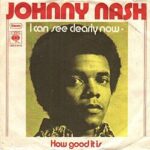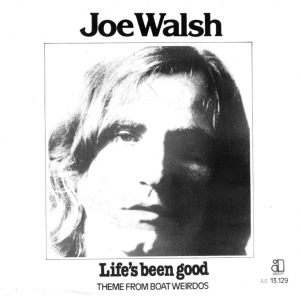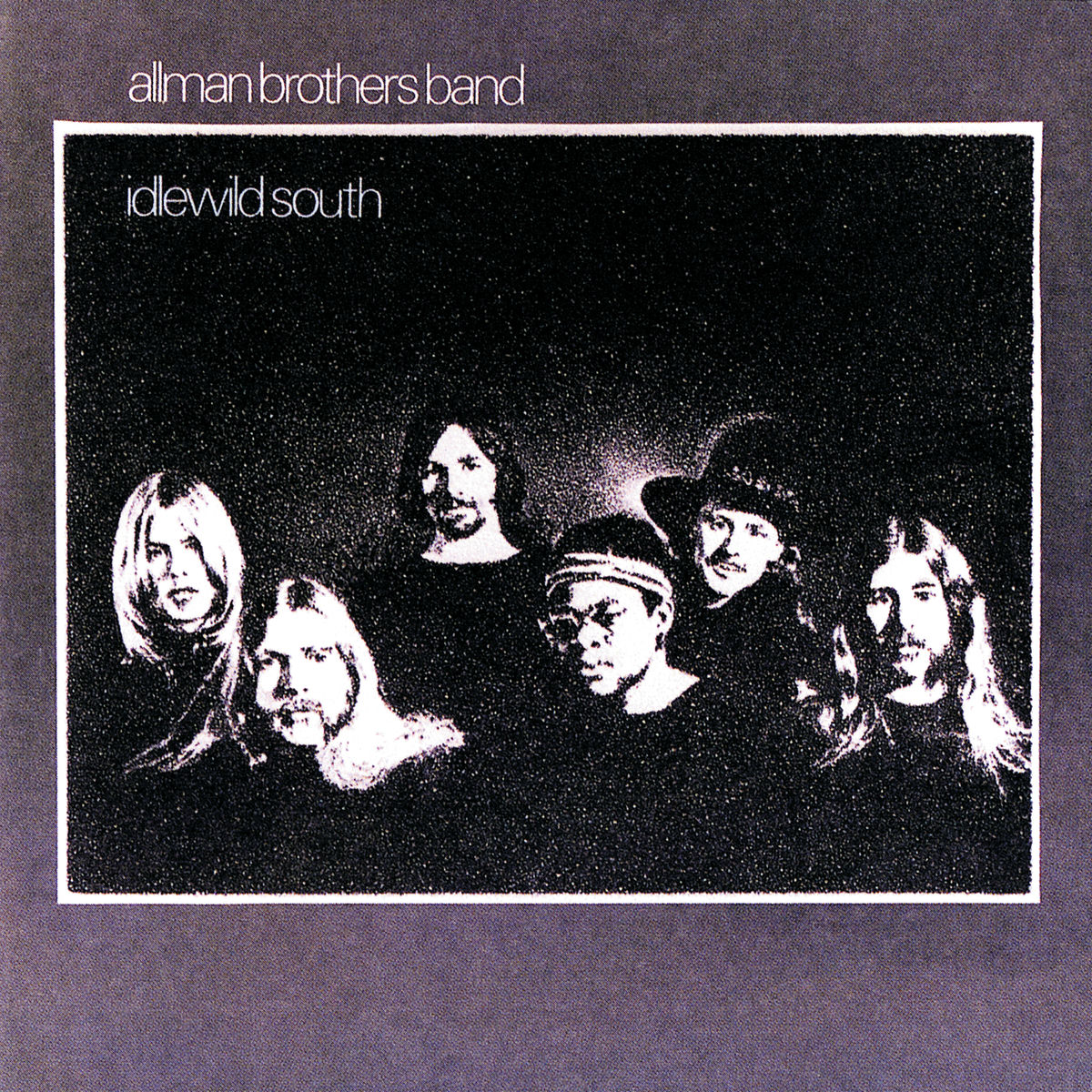 There are songs that feel like weather—tracks that instantly change the atmosphere around you the moment they begin. Johnny Nash’s “I Can See Clearly Now,” released in 1972, is one of those rare creations. Its opening chords alone seem to pull away the clouds, letting light flood in. There’s no rush, no strain, no theatrical swell—just an easy, radiant calm that settles over the listener like a warm morning breeze. It’s a piece of music that radiates optimism, hope, and emotional clarity. But more than that, it’s a song that seems to have somehow existed beyond its moment, staying relevant and comforting across decades, genres, and generations.
There are songs that feel like weather—tracks that instantly change the atmosphere around you the moment they begin. Johnny Nash’s “I Can See Clearly Now,” released in 1972, is one of those rare creations. Its opening chords alone seem to pull away the clouds, letting light flood in. There’s no rush, no strain, no theatrical swell—just an easy, radiant calm that settles over the listener like a warm morning breeze. It’s a piece of music that radiates optimism, hope, and emotional clarity. But more than that, it’s a song that seems to have somehow existed beyond its moment, staying relevant and comforting across decades, genres, and generations.
What makes the song’s emotional power so striking is that it never resorts to dramatic language or heavy-handed metaphors. Instead, it uses simple imagery—sunshine, blue skies, rainbows—to express a deeply human truth: sometimes the storms in our lives clear up, and suddenly the path forward becomes beautifully visible. When Johnny Nash recorded his timeless hit, he wasn’t shouting triumph from the rooftops. He was smiling through relief, singing with the warmth of someone who had made it out the other side of a difficult chapter. That sincerity is what continues to make “I Can See Clearly Now” resonate so powerfully today.
A Song That Shines From Within
At its core, “I Can See Clearly Now” is a celebration of clarity—not just literal, but emotional. Nash had a unique gift for delivering uplifting messages without sounding forced or sentimental. His vocal style was unhurried and gently soulful, blending elements of American pop with the Caribbean influences he’d embraced during his time recording in Jamaica. The result is a track that feels breezy yet substantial, light yet meaningful.
Musically, the song is built on a clean, polished arrangement that mirrors the clarity described in the lyrics. The acoustic guitar strums provide a fresh rhythmic lift, while the subtle presence of reggae-inflected percussion gives the track its gentle sway. Strings fill the background with warmth, and the harmonies—smooth, pleasant, perfectly blended—float effortlessly above everything. It’s a bright, inviting sound that instantly eases tension.
Nash’s voice is the guiding light. It’s calm, confident, and free of excess ornamentation. His delivery is so natural that it seems as though he really is seeing the world with fresh eyes as the words leave his lips. The confidence in his tone makes the listener believe every word, and that sense of authenticity is one of the song’s greatest strengths.
A Message Rooted in Resilience
Though many listeners approach “I Can See Clearly Now” as a feel-good pop tune—and it certainly is one—its uplifting tone is rooted in something deeper. The lyrics speak to overcoming adversity, moving through darkness, and emerging in a place where life suddenly feels manageable again. The metaphor of weather is simple, but Nash uses it with precision:
“I can see clearly now, the rain is gone.”
That rain can represent heartbreak, anxiety, uncertainty, loss, depression—anything that blinds or burdens someone during a difficult chapter. The song never specifies what the rain was because it doesn’t have to. Listeners project their own struggles onto it, making the song a personal experience rather than a universal one.
There’s a quiet power in the repeated promises throughout the track:
“It’s gonna be a bright, bright sun-shiny day.”
Nash doesn’t belt these lines with theatrical force; he states them calmly, peacefully. His confidence feels earned rather than assumed. It’s this grounded optimism that separates “I Can See Clearly Now” from more saccharine inspirational songs. Rather than promising that everything will suddenly be perfect, the song simply acknowledges that moments of clarity exist—and that they’re worth holding on to when they arrive.
Johnny Nash: A Unique Musical Path
Johnny Nash’s career is often misunderstood. Many listeners assume he was a reggae artist because of the Jamaican influence in his biggest hit, but Nash was fundamentally a genre-blending singer-songwriter who moved fluidly through pop, R&B, and Caribbean styles. His musical journey was long and unconventional, beginning with teenage appearances on local Houston radio and eventually leading to acting, producing, and pioneering cross-cultural collaborations.
His connection to Jamaica was particularly significant. Nash was one of the first non-Jamaican artists to record extensively on the island, absorbing the rhythms and attitudes that would shape hits like “Hold Me Tight” and “Stir It Up,” the latter of which he recorded years before Bob Marley’s version became widely known. Nash recognized the depth of Jamaican music early and helped bring some of its artists—Marley included—to larger global audiences.
This immersion in the vibrant, uplifting spirit of reggae played a major role in shaping “I Can See Clearly Now.” The song isn’t a reggae track in the strict sense, but its relaxed rhythm, sunny disposition, and gentle sway clearly reflect Nash’s connection to Jamaica. His musical fusion was ahead of its time, helping open the door for reggae’s eventual global popularity in the mid-1970s.
The Creation of a Classic
Recorded in London and Jamaica, “I Can See Clearly Now” was produced by Nash himself. That level of artistic control allowed him to shape the song precisely the way he envisioned it—smooth, uplifting, and deeply human. One of the key elements in the arrangement is the use of backing vocals, which add warmth and texture without stealing the spotlight. Their presence enhances the emotional sense of community and reassurance that the song conveys.
The instrumentation is equally meticulous. The subtle interplay between guitar, bass, and percussion creates a gentle groove that encourages the listener to sway without ever overpowering the vocals. The arrangement feels meticulously planned yet effortlessly natural, the hallmark of a songwriter and producer who understands the emotional contour of his work.
The song became a massive hit, spending four weeks at No. 1 on the Billboard Hot 100 and charting internationally. It wasn’t just popular—it became part of the cultural fabric. Its optimism made it a go-to track for movies, television, commercials, and, more importantly, for people who needed a moment of lightness during difficult times.
A Song of Healing in Real Time
“I Can See Clearly Now” is more than a declaration of hope—it’s a moment of healing set to music. What sets it apart from other uplifting songs is the emotional honesty built into the melody and lyrics. Nash doesn’t sound triumphant in a victory-lap sense; he sounds relieved, grateful, and newly energized. That sincerity resonates deeply with listeners, which is why the song is often associated with recovery, personal breakthroughs, and emotional turning points.
The verse:
“Gone are the dark clouds that had me blind.”
suggests a long struggle, not a quick fix. The clarity he’s singing about isn’t instant—it’s earned. That emotional realism gives the song its depth. It acknowledges the storm while celebrating the sunlight.
A Timeless Global Anthem
Over the decades, “I Can See Clearly Now” has become one of the most recognizable songs in the world. Its appeal crosses genres, cultures, and ages. Cover versions have appeared in styles ranging from reggae (Jimmy Cliff’s famous 1993 version) to pop, soul, country, and even children’s music. The song survives reinterpretation because its foundation—hope emerging from struggle—is universally relatable.
Films like Cool Runnings, Grosse Pointe Blank, and Antz have all used the song to underscore moments of triumph or renewal. Commercials and television shows continue to revive it for the same reason. Its positivity is evergreen without ever feeling artificial.
What’s remarkable is that the original version still feels fresh. The production hasn’t aged in the way that many early ’70s songs have. Its clean arrangement, warm vocals, and timeless message make it sound just as comforting and reassuring today as it did in 1972.
Why the Song Endures
There are several reasons “I Can See Clearly Now” holds such a special place in musical history:
1. It’s universally relatable.
Everyone goes through storms—heartbreak, confusion, depression, uncertainty. The moment the metaphorical clouds lift is something every listener understands.
2. Its optimism is calm, not exaggerated.
Nash delivers hope with sincerity rather than spectacle.
3. The melody is uplifting but gentle.
It invites the listener in rather than overwhelming them.
4. It blends genres gracefully.
Its mix of pop warmth and Caribbean ease helped it stand out instantly.
5. It feels genuinely healing.
There’s something deeply comforting about the way Nash sings, as though he’s been there and wants to help you get through it too.
A Song That Feels Like a New Morning
More than fifty years after its release, “I Can See Clearly Now” remains a musical sunrise. It’s a song that soothes without dulling emotion, energizes without rushing, and reassures without ever sounding preachy. Johnny Nash captured the moment when struggle breaks into relief, when darkness gives way to clarity, when life starts making sense again.
The magic of the track lies in its balance of simplicity and depth. The imagery is bright and familiar, but the emotional weight beneath it is profound. It’s easy to sing along to, yet it speaks to the deepest parts of the human experience.
Johnny Nash may not be as frequently mentioned as some of his contemporaries, but “I Can See Clearly Now” stands as one of the most enduring feel-good songs ever written. It’s not tied to a fad or a moment—it’s tied to a feeling, one that will always be relevant.
And every time those opening chords play, it still works its quiet miracle. The clouds lift, the mood brightens, and for a few minutes, the world truly does feel like a bright, bright sun-shiny day.


